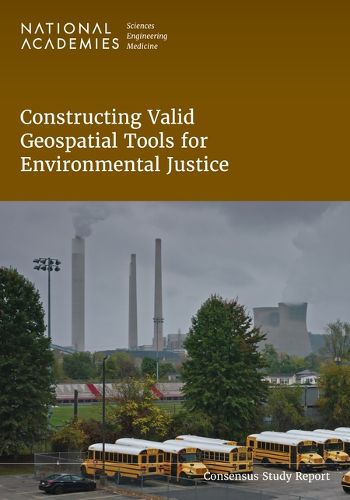Readings Newsletter
Become a Readings Member to make your shopping experience even easier.
Sign in or sign up for free!
You’re not far away from qualifying for FREE standard shipping within Australia
You’ve qualified for FREE standard shipping within Australia
The cart is loading…






Decades of research have shown that disadvantaged communities exist at the intersection of high levels of hazard exposure and poverty. Geospatial environmental justice (EJ) tools, such as the White House Council on Environmental Quality-developed Climate and Economic Justice Screening Tool (CEJST), are designed to integrate different kinds of health, social, environmental, and economic data to identify disadvantaged communities and to aid policy and investment decisions that address the pervasive, persistent, and largely unaddressed problems associated with environmental disparities in the United States.
Constructing Valid Geospatial Tools for Environmental Justice evaluates several EJ tools, including CEJST, and provides a conceptual framework and data strategy recommendations for developing the composite indicators that are the heart of geospatial EJ tools. An EJ tool that is transparent, legitimate, and has the trust of its users and the communities it represents is based on a structured iterative process that includes: a clear statement of tool objectives and definitions for the concepts being measured; the selection and integration of data and indicators; and assessment of robustness of the selected data and integration processes. Decisions regarding the tool should be iteratively informed by meaningful community engagement, validation to ensure tool results reflect real-world experiences, and careful and thorough documentation of all decision and data processes.
Table of Contents
Front Matter Summary 1 Introduction 2 Background and Definitions 3 A Conceptual Framework for Building Composite Indicators 4 Environmental Justice Tools 5 Selecting and Analyzing Indicators and Datasets and CEJST Indicators 6 Indicator Integration 7 Importance of and Methods for Tool Validation 8 Recommendations References Appendix A: Biographical Sketches of Committee Members Appendix B: Public Meeting Agendas Appendix C: Screening Tools Examined by the Committee Appendix D: Example Datasets for Consideration for EJ Tool Indicators
$9.00 standard shipping within Australia
FREE standard shipping within Australia for orders over $100.00
Express & International shipping calculated at checkout
Decades of research have shown that disadvantaged communities exist at the intersection of high levels of hazard exposure and poverty. Geospatial environmental justice (EJ) tools, such as the White House Council on Environmental Quality-developed Climate and Economic Justice Screening Tool (CEJST), are designed to integrate different kinds of health, social, environmental, and economic data to identify disadvantaged communities and to aid policy and investment decisions that address the pervasive, persistent, and largely unaddressed problems associated with environmental disparities in the United States.
Constructing Valid Geospatial Tools for Environmental Justice evaluates several EJ tools, including CEJST, and provides a conceptual framework and data strategy recommendations for developing the composite indicators that are the heart of geospatial EJ tools. An EJ tool that is transparent, legitimate, and has the trust of its users and the communities it represents is based on a structured iterative process that includes: a clear statement of tool objectives and definitions for the concepts being measured; the selection and integration of data and indicators; and assessment of robustness of the selected data and integration processes. Decisions regarding the tool should be iteratively informed by meaningful community engagement, validation to ensure tool results reflect real-world experiences, and careful and thorough documentation of all decision and data processes.
Table of Contents
Front Matter Summary 1 Introduction 2 Background and Definitions 3 A Conceptual Framework for Building Composite Indicators 4 Environmental Justice Tools 5 Selecting and Analyzing Indicators and Datasets and CEJST Indicators 6 Indicator Integration 7 Importance of and Methods for Tool Validation 8 Recommendations References Appendix A: Biographical Sketches of Committee Members Appendix B: Public Meeting Agendas Appendix C: Screening Tools Examined by the Committee Appendix D: Example Datasets for Consideration for EJ Tool Indicators